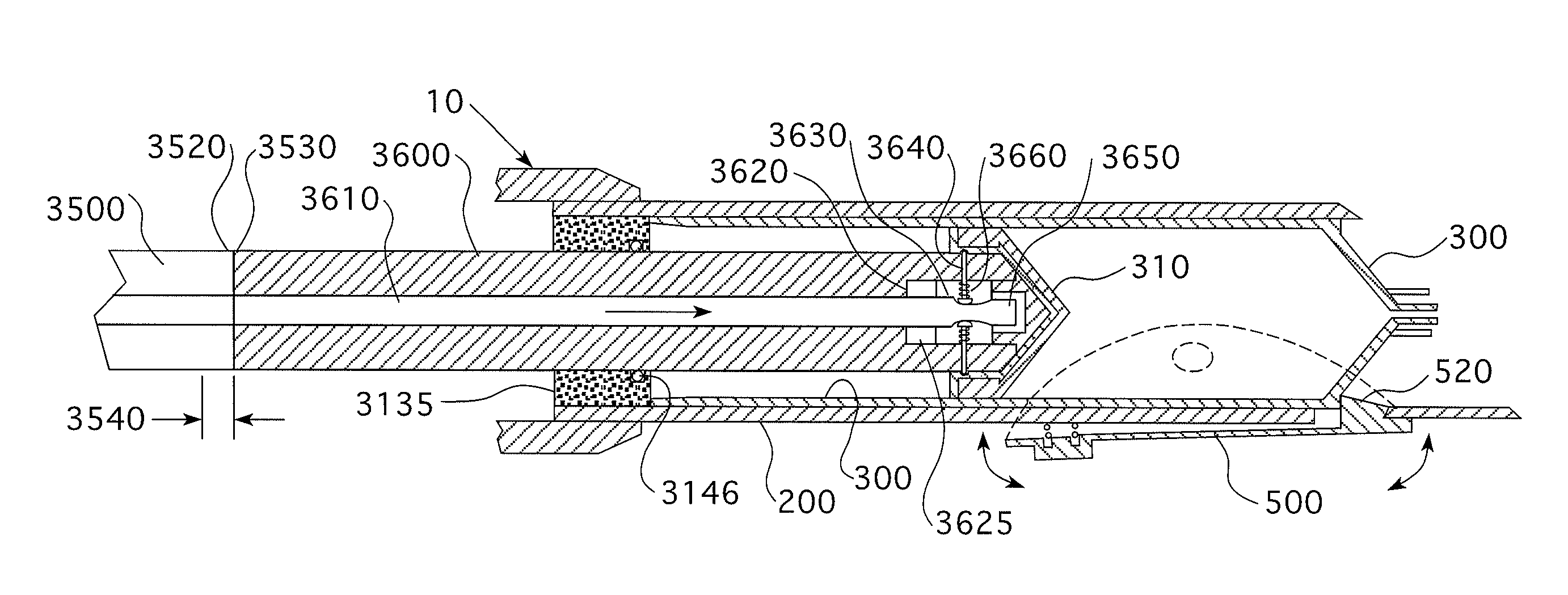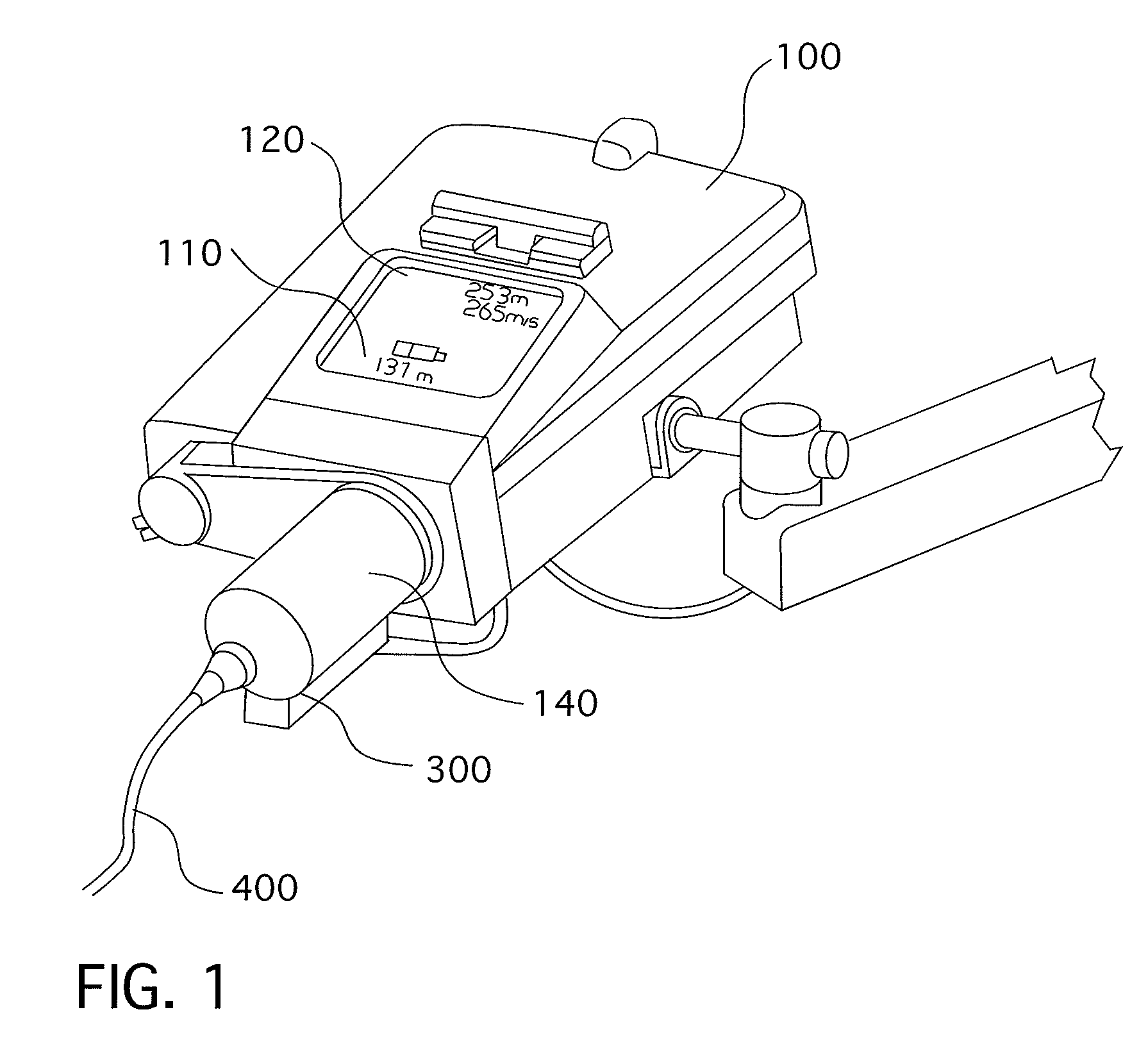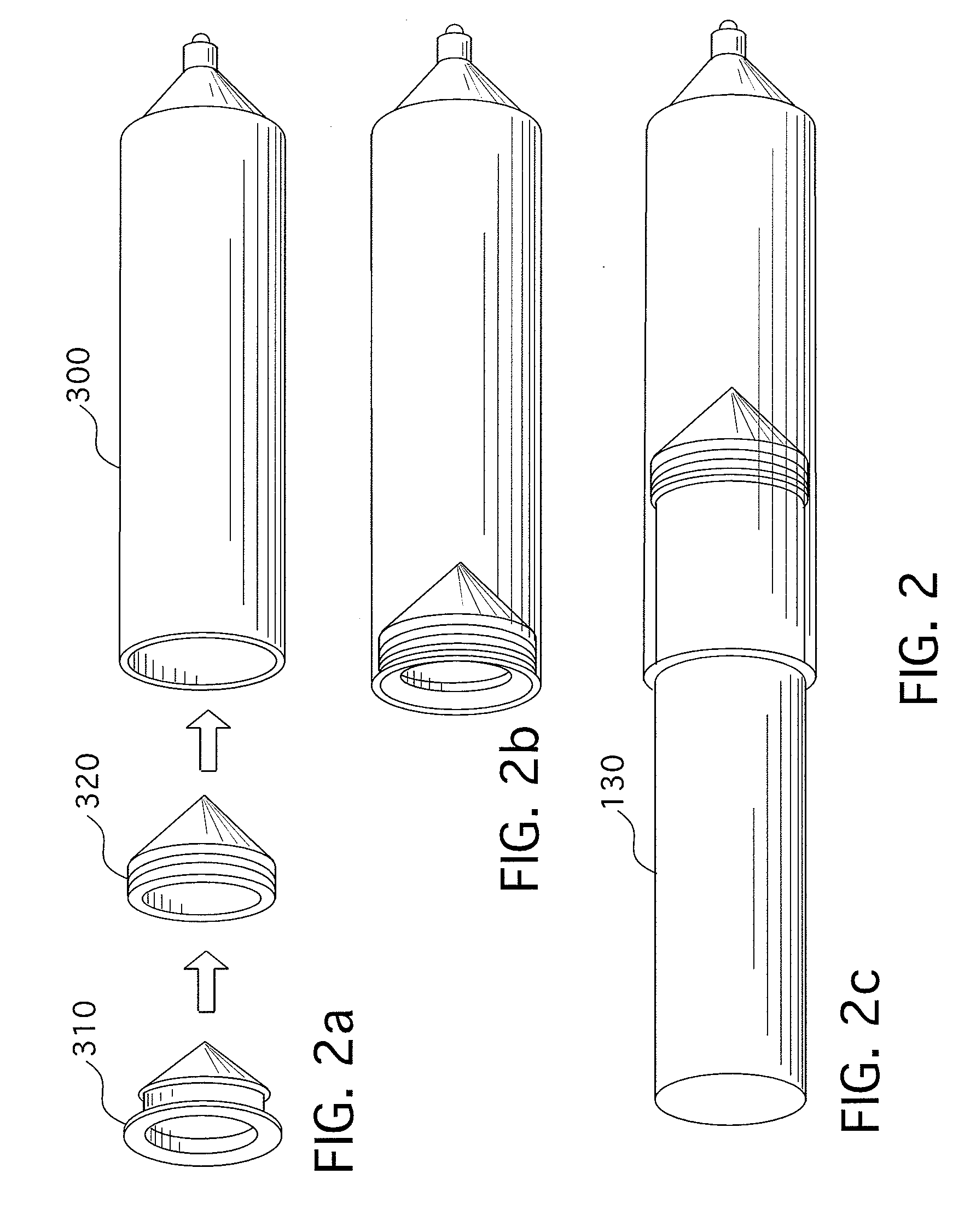Syringes for Medical Injector Systems
a technology of injector system and syringe, which is applied in the direction of automatic syringe, application, infusion syringe, etc., can solve the problems of increasing the risk of undesirable infection of patients, increasing the manufacturing assembly cost and complexity of the syringe, and reducing the chances of microbes entering the fluid and patient, reducing the cost of materials used, and reducing the speed of syringe filling.
- Summary
- Abstract
- Description
- Claims
- Application Information
AI Technical Summary
Benefits of technology
Problems solved by technology
Method used
Image
Examples
Embodiment Construction
[0260]A typical injector system used for similar applications as the present invention includes an automatic injector device 100. The injector will normally have a data entry pad 110 together with a display 120 for entering data and viewing data respectively. The type of data that may be entered into the system includes injecting rates and volumes. The system according to the prior art includes a pressure jacket or sleeve 140 which is connected to injector 100 for retaining an appropriate syringe 300. Tube 400 connects syringe 300 to the patient (not shown). The prior-art arrangement of the injector as shown in FIG. 1 suffers from a number of disadvantages. Firstly, to install syringe 300 into injector 100, sleeve 140 must first be removed or opened to allow syringe 300 to be rear- or breech-loaded into the sleeve 140 and fixed therein by reattaching or closing sleeve 140. In some cases, sleeve 140 is completely closed, like that shown in FIG. 1, requiring that tube 400 be attached ...
PUM
 Login to View More
Login to View More Abstract
Description
Claims
Application Information
 Login to View More
Login to View More - R&D
- Intellectual Property
- Life Sciences
- Materials
- Tech Scout
- Unparalleled Data Quality
- Higher Quality Content
- 60% Fewer Hallucinations
Browse by: Latest US Patents, China's latest patents, Technical Efficacy Thesaurus, Application Domain, Technology Topic, Popular Technical Reports.
© 2025 PatSnap. All rights reserved.Legal|Privacy policy|Modern Slavery Act Transparency Statement|Sitemap|About US| Contact US: help@patsnap.com



